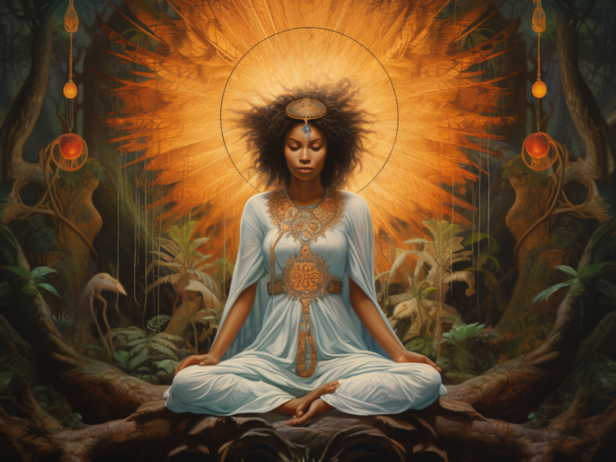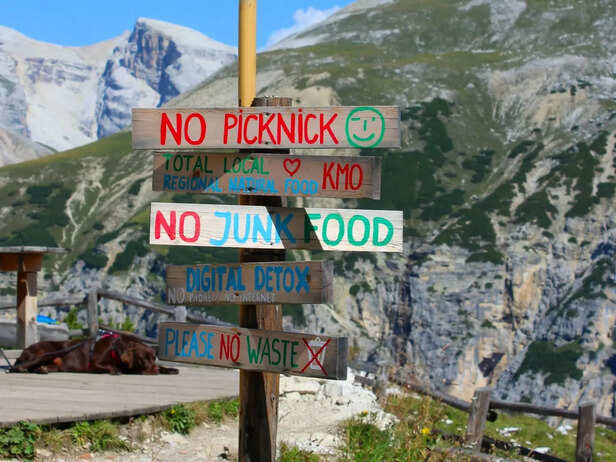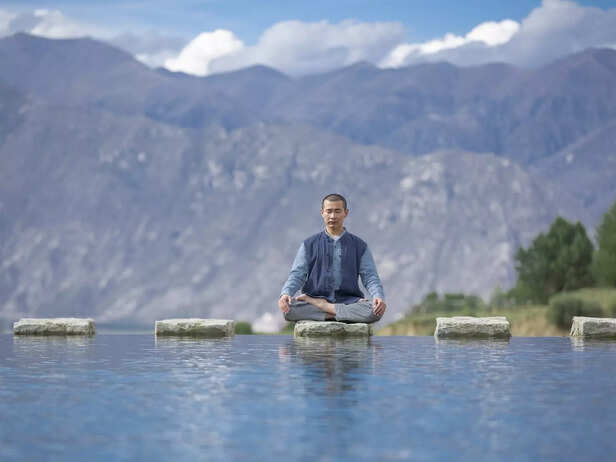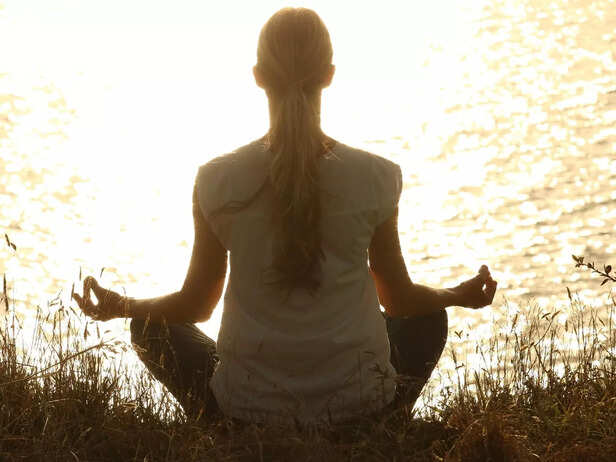Vipassana Meditation: Why Silence Is the New Luxury
Ritika | Sep 12, 2025, 15:01 IST
Meditation
( Image credit : Pixabay )
Vipassana, a traditional Buddhist silent meditation, is today a contemporary retreat from the fidgety: ten days of silence, no phones, talk, or distraction. Silence, once mundane, is now a luxury. Science suggests that there are genuine advantages, less stress, a finer mind, but beneath the calm are hard realities: cultural tensions, ethical arguments, and dangers many don't anticipate.
I signed up for a ten-day Vipassana retreat a few years ago because I was bone-tired of being “busy.” Busy for grades, busy for work, busy for nothing. My calendar was full, my head louder than any city street. When I told friends I’d be spending ten days in silence, they smirked. “A digital detox spa?” they joked.
It wasn’t. At all.
Picture this: a 4 a.m. gong instead of an alarm, breakfast that’s basically porridge, and then hours on a thin cushion watching your mind unravel. No phone. No book. Not even eye contact. After a while, silence stopped being calm and started to feel raw, even hostile. Then, slowly, it shifted into something else. A small crack of stillness that felt like it had been hiding in me for years.
That’s the paradox of Vipassana. It’s packaged as peace, but the truth is much rougher.

Vipassana, literally “insight”, isn’t new. It's rooted in Buddhist tradition and popularized around the world by S.N. Goenka during the second half of the 20th century. The retreats are deliberately spartan: ten days, noble silence (no talk, no gestures, no writing), two vegetarian meals daily, and about ten hours of meditation a day. No phones, no books, no diary. Just you, your breath, your body, your very restless mind.
It’s not wellness tourism, though it often gets lumped into that category. There’s no scented candle to ease you through the long sittings. Your back hurts. Your legs fall asleep. Your mind runs like a cornered animal. Then, if you stick with it, the mind sometimes softens. Not into “Zen bliss,” but into something sharper, clearer.
That’s why many call it detox, not from toxins, but from noise.
What the Science Says About Silence

Scientists have been poking around this stuff for years, trying to prove what monks have been saying forever, that quiet changes the brain. Some of the data is small, some is shaky, but it’s not all fluff. A 2016 study published in Frontiers in Psychology followed people through an intensive meditation retreat and found their mindfulness levels and emotional stability stuck around even months later. Another study (Tang, Hölzel & Posner, in Nature Reviews Neuroscience, 2015) connected meditation to lower stress and better self-regulation.
But here’s the twist: silence itself, not just the meditation, might be doing work. A 2013 paper in Brain Structure and Function by Imke Kirste looked at mice kept in silence and found they actually grew new neurons in the hippocampus, the bit of the brain tied to learning and memory. Humans aren’t mice, obviously, but psychologists like David Kraemer at Dartmouth have argued that stillness and silence give our default mode network, the brain’s “daydreaming” system, room to process stuff we usually bury under podcasts and notifications.
Do the headlines exaggerate? Of course they do. “Silence rewires your brain!” makes better clicks than “it probably helps a bit.” But even without the hype, anyone who’s stepped off a highway and into a quiet forest knows: something changes. Vipassana just takes that “something” and stretches it over ten long, raw days.

Walk into a coffee shop. Everyone has earbuds in, tapping screens, talking over background music. Trains, gyms, even grocery stores have their soundtracks. We live in an economy of attention, and silence doesn’t sell ads.
That makes it rare. And when something becomes rare, it becomes desirable. Travel agencies now sell “silent vacations” at boutique prices. Influencers brag about “dopamine detoxes.” Tech CEOs disappear into the mountains for silent retreats.
Vipassana has become a kind of spiritual rootstock for this new industry of quiet. But there’s a difference between treating silence as a commodity and experiencing silence as a practice. The first is a product. The second can feel like stripping away the floor under your feet until you realize, you’re still standing.

Here’s the part the glossy wellness blogs gloss over: silence can hurt.
The Financial Times investigated Goenka-style centers and found cases of people unraveling, panic attacks, resurfaced trauma, breakdowns. In rare, devastating instances, deaths have been linked to the psychological toll of intensive retreats.
It’s not that meditation is “bad.” It’s that forcing people, especially those with fragile mental health, into ten days of isolation and relentless introspection can backfire hard.
People with trauma or psychiatric conditions are most vulnerable. Imagine pulling away every distraction, every support, and then pushing someone inward for hours each day. For some, that’s clarity. For others, it’s collapse.
The best centers screen applicants, offer mental health resources, and have safety protocols. But not every center does. And when silence gets marketed as miracle medicine, these risks rarely get airtime.

Here’s the blunt truth: not everyone should sign up. If your life feels like one endless group chat, buzzing, pinging, no pause, then Vipassana can feel like a reset button you didn’t know existed. You’ll probably come back with a stronger attention span, a weirdly high tolerance for discomfort, and maybe a clearer sense of what you actually care about. Some people leave saying it’s the first time they ever really sat with themselves without reaching for a phone.
But, and this is a huge but, if you’ve got a history of anxiety, trauma, depression, or anything in that zone, ten days of silence can backfire hard. Psychologists have warned about this. Willoughby Britton, a researcher at Brown University who runs “The Dark Night Project,” has collected reports of people hitting panic, paranoia, or resurfaced trauma during retreats. And the problem isn’t the meditation itself; it’s the intensity and the lack of safety nets. Ten hours of staring at your thoughts with zero distractions isn’t therapy, and it isn’t meant to be.
So who should try it? People who are reasonably stable, curious, and willing to suffer through boredom and body aches in exchange for clarity. Who shouldn’t? Anyone expecting a miracle fix, or anyone approaching on shaky footing to begin with. There are softer points of entry, such as a one-day retreat, a weekend, or even an hour of quiet at home. Vipassana is not enlightenment-on-demand. It's hard labor, and you have to be sure if you're willing to lift it.
We treat silence as rare now because we’ve made it rare. Our culture fills every gap with chatter, notifications, playlists, and ads. Vipassana offers one of the few places left where you can experience silence not as emptiness but as practice, a practice of noticing what’s already here.
Is it easy? No. Is it safe for everyone? Definitely not. But for those who can handle the intensity, Vipassana offers a reminder that silence isn’t a void. It’s a space. And sometimes that space is exactly where you finally hear yourself.
Explore the latest trends and tips in Health & Fitness, Spiritual, Travel, Life Hacks, Trending, Fashion & Beauty, and Relationships at Times Life!
It wasn’t. At all.
Picture this: a 4 a.m. gong instead of an alarm, breakfast that’s basically porridge, and then hours on a thin cushion watching your mind unravel. No phone. No book. Not even eye contact. After a while, silence stopped being calm and started to feel raw, even hostile. Then, slowly, it shifted into something else. A small crack of stillness that felt like it had been hiding in me for years.
That’s the paradox of Vipassana. It’s packaged as peace, but the truth is much rougher.
What Vipassana Actually Is

Woman meditating
( Image credit : Pixabay )
Vipassana, literally “insight”, isn’t new. It's rooted in Buddhist tradition and popularized around the world by S.N. Goenka during the second half of the 20th century. The retreats are deliberately spartan: ten days, noble silence (no talk, no gestures, no writing), two vegetarian meals daily, and about ten hours of meditation a day. No phones, no books, no diary. Just you, your breath, your body, your very restless mind.
It’s not wellness tourism, though it often gets lumped into that category. There’s no scented candle to ease you through the long sittings. Your back hurts. Your legs fall asleep. Your mind runs like a cornered animal. Then, if you stick with it, the mind sometimes softens. Not into “Zen bliss,” but into something sharper, clearer.
That’s why many call it detox, not from toxins, but from noise.
What the Science Says About Silence

Woman doing "shh" sign
( Image credit : Pexels )
Scientists have been poking around this stuff for years, trying to prove what monks have been saying forever, that quiet changes the brain. Some of the data is small, some is shaky, but it’s not all fluff. A 2016 study published in Frontiers in Psychology followed people through an intensive meditation retreat and found their mindfulness levels and emotional stability stuck around even months later. Another study (Tang, Hölzel & Posner, in Nature Reviews Neuroscience, 2015) connected meditation to lower stress and better self-regulation.
But here’s the twist: silence itself, not just the meditation, might be doing work. A 2013 paper in Brain Structure and Function by Imke Kirste looked at mice kept in silence and found they actually grew new neurons in the hippocampus, the bit of the brain tied to learning and memory. Humans aren’t mice, obviously, but psychologists like David Kraemer at Dartmouth have argued that stillness and silence give our default mode network, the brain’s “daydreaming” system, room to process stuff we usually bury under podcasts and notifications.
Do the headlines exaggerate? Of course they do. “Silence rewires your brain!” makes better clicks than “it probably helps a bit.” But even without the hype, anyone who’s stepped off a highway and into a quiet forest knows: something changes. Vipassana just takes that “something” and stretches it over ten long, raw days.
Why Silence Feels Like a Luxury Now

Detox
( Image credit : Unsplash )
Walk into a coffee shop. Everyone has earbuds in, tapping screens, talking over background music. Trains, gyms, even grocery stores have their soundtracks. We live in an economy of attention, and silence doesn’t sell ads.
That makes it rare. And when something becomes rare, it becomes desirable. Travel agencies now sell “silent vacations” at boutique prices. Influencers brag about “dopamine detoxes.” Tech CEOs disappear into the mountains for silent retreats.
Vipassana has become a kind of spiritual rootstock for this new industry of quiet. But there’s a difference between treating silence as a commodity and experiencing silence as a practice. The first is a product. The second can feel like stripping away the floor under your feet until you realize, you’re still standing.
The Risks Nobody Likes to Mention

A man meditating
( Image credit : Pixabay )
Here’s the part the glossy wellness blogs gloss over: silence can hurt.
The Financial Times investigated Goenka-style centers and found cases of people unraveling, panic attacks, resurfaced trauma, breakdowns. In rare, devastating instances, deaths have been linked to the psychological toll of intensive retreats.
It’s not that meditation is “bad.” It’s that forcing people, especially those with fragile mental health, into ten days of isolation and relentless introspection can backfire hard.
People with trauma or psychiatric conditions are most vulnerable. Imagine pulling away every distraction, every support, and then pushing someone inward for hours each day. For some, that’s clarity. For others, it’s collapse.
The best centers screen applicants, offer mental health resources, and have safety protocols. But not every center does. And when silence gets marketed as miracle medicine, these risks rarely get airtime.
Who Should Try Vipassana, and Who Shouldn’t

Meditate
( Image credit : Pixabay )
Here’s the blunt truth: not everyone should sign up. If your life feels like one endless group chat, buzzing, pinging, no pause, then Vipassana can feel like a reset button you didn’t know existed. You’ll probably come back with a stronger attention span, a weirdly high tolerance for discomfort, and maybe a clearer sense of what you actually care about. Some people leave saying it’s the first time they ever really sat with themselves without reaching for a phone.
But, and this is a huge but, if you’ve got a history of anxiety, trauma, depression, or anything in that zone, ten days of silence can backfire hard. Psychologists have warned about this. Willoughby Britton, a researcher at Brown University who runs “The Dark Night Project,” has collected reports of people hitting panic, paranoia, or resurfaced trauma during retreats. And the problem isn’t the meditation itself; it’s the intensity and the lack of safety nets. Ten hours of staring at your thoughts with zero distractions isn’t therapy, and it isn’t meant to be.
So who should try it? People who are reasonably stable, curious, and willing to suffer through boredom and body aches in exchange for clarity. Who shouldn’t? Anyone expecting a miracle fix, or anyone approaching on shaky footing to begin with. There are softer points of entry, such as a one-day retreat, a weekend, or even an hour of quiet at home. Vipassana is not enlightenment-on-demand. It's hard labor, and you have to be sure if you're willing to lift it.
Wrapping Up
Is it easy? No. Is it safe for everyone? Definitely not. But for those who can handle the intensity, Vipassana offers a reminder that silence isn’t a void. It’s a space. And sometimes that space is exactly where you finally hear yourself.
Explore the latest trends and tips in Health & Fitness, Spiritual, Travel, Life Hacks, Trending, Fashion & Beauty, and Relationships at Times Life!
